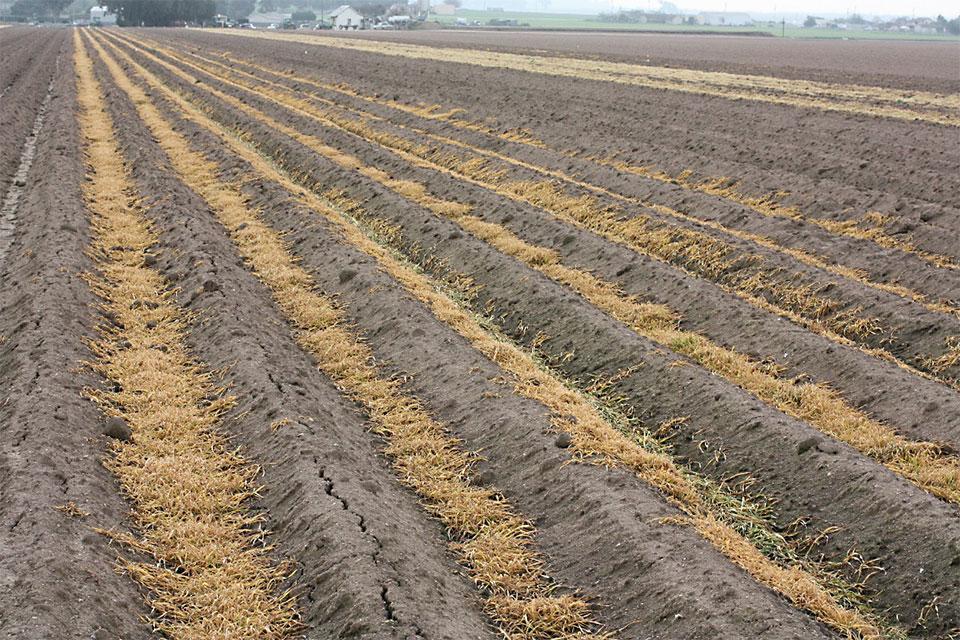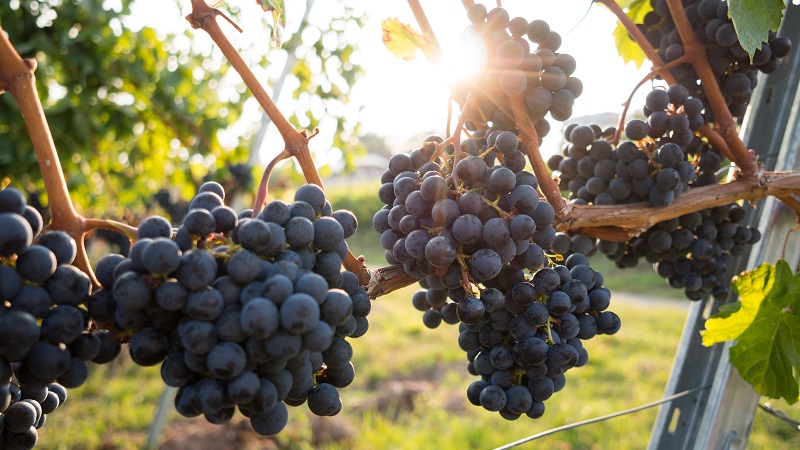How To Pick the Right Cover Crop for the Job
Cover crops have many potential benefits for vegetable cropping systems. Incorporating cover crop biomass into the soil can add organic matter and improve tilth. Cover crops can increase macropores and aggregate structure, which helps aerate soil and increase water-holding capacity.
Non-legume cover crops scavenge nutrients such as nitrate so it is not lost during the periods of high precipitation. Leguminous cover crops can fix nitrogen, which, after incorporation, release nitrogen into the soil so it can be used by a following vegetable crop. Certain cover crop species such as mustards and brassicas can also assist with the management of soilborne diseases such as verticillium and sclerotinia.
Cover crops also help shield soil during intense rain events, preventing the formation of surface crusts, which reduces infiltration and increases runoff. They also protect soil from erosion by slowing runoff and reducing suspended sediment loads.
Although cover crops have many potential benefits, no one cover crop can do it all.
Also, timing can be problematic in vegetable systems because the window for growing cover crops is often limited to just a few months, and cover crop residue needs to be managed before planting a vegetable crop.
Important questions to consider when planning for a cover crop are:
1. What is the main benefit that you want to achieve?
2. When will it be grown?
Fortunately, there are many species and strategies of growing and managing cover crops to consider. Here are some examples of how cover crops can be used for reducing nitrate leaching and preventing runoff in the winter.
Preventing Nitrate-Leaching Losses
In the Salinas Valley, winter cover crops are planted for scavenging residual soil nitrogen in late fall, which lessens nitrate leaching during the winter.
Mustard and winter cereal species such as barley, cereal rye, and triticale are often planted in October or November, just after or before the first rains. These cover crops grow for three to four months during the winter. They can produce significant amounts of biomass that needs to be incorporated, and you should allow sufficient time for it to break down before planting a vegetable crop. Consequently, this strategy of cover cropping is limited to fields that will be planted with a vegetable in late spring and early summer.

Winter cover crops of triticale planted in furrows (left) and cereal rye planted in furrows and on beds (right).
Photo by Michael Cahn
Another strategy increasingly used in the Salinas Valley is to plant cereal species in late summer and early fall after the last vegetable crop is harvested.
The cover crop must be irrigated during this period, but it grows fast. You can then till it into the soil, so the field can be prepared for spring planting before winter rains arrive in late November.
If grown long enough, a fall cover crop can take up significant amounts soil nitrogen. Also, as a cereal cover crop matures, the carbon-to-nitrogen ratio increases. Enough so that mineralization of the incorporated residue may be slow enough during cold winter conditions to delay the release of inorganic nitrogen until late winter or early spring.

A cover crop planted in furrow bottoms was killed with an herbicide to limit biomass growth. The remaining residue was effective in reducing storm runoff.
Photo by Michael Cahn
Protecting Soil from Erosion and Reducing Storm Runoff
Another use of cover crops is protecting soil from erosion and reducing runoff during the rainy season. On the California Central Coast, storms from the Pacific arrive in the winter and can continue into spring. Vegetable growers are usually concerned about access to fields during these months so they can plant.
A cover crop can disrupt planting schedules of cash crops in the spring, especially if it has a lot of biomass that must be tilled in. Several strategies can help.
One is to plant the cover crop just where it is needed. That could mean in the furrows where runoff can be slowed down and infiltrated.
Another is to kill the cover crop with a broad-spectrum herbicide, such as glyphosate, before it gets too large to limit the biomass to less than a ton per acre of dry matter. The herbicide application can also eliminate winter weeds.
The use of drone sprayers can help apply herbicides precisely, even when the soil is too wet for a tractor application. A month or so after the application the cover crop will almost completely decompose on the soil surface. Even though little biomass remains, the residue has been shown to significantly reduce runoff and soil erosion and increase infiltration from rainfall.
Another strategy recently tested is to plant a warm-weather species such as sudangrass in early fall. The fall planting allows sufficient time for sudangrass to grow, but as temperatures cool down in late fall, growth slows, which limits the biomass to a manageable amount.

Sudangrass is set back by cold weather which limits the amount of biomass.
Photo by Michael Cahn
Severe frosts that typically occur in January can set back or kill sudangrass, so the risk of accumulating too much biomass growth is minimized.
If planted on listed beds, sudangrass can be incorporated into the soil as the beds are tilled for planting in the spring, reducing the need for extra tillage passes.
Field trials conducted last winter demonstrated that this strategy of managing sudangrass reduced sediment loss by 94% and runoff by 70% relative to unplanted bare plots.
Just as no one tool can do all jobs, no one cover crop can achieve all potential benefits. A recommended approach is to first identify the most important services desired from a cover crop and then select the best species and growing strategy to meet your objective. Trying out creative ways to use cover crops in a small area of a field can also help you figure out ways to include this important tool in your vegetable systems.









